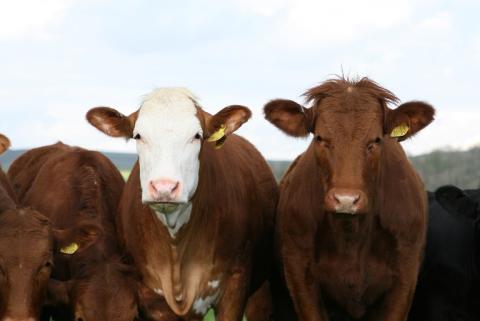You may be wondering why the title of this short review refers to methane as a "stealthy GHG". This is because, despite the fact that it is more than 28 times more powerful than carbon dioxide, it is often overlooked and seems to evade the public eye when policies or action plans to tackle climate change are discussed. COP26 in Glasgow will be the biggest meeting of world leaders, since the Paris talks in 2015, which will reunite to try and reach one common goal: mitigate climate change and ensure the sustainable future of our world. Despite these objectives, methane seems to have evaded the discussion once again. One of the most surprising facts I have read in the days leading up to COP26 is that even though it is acknowledged that livestock is the main contributor of methane emissions, no country has set any real target for livestock related emissions and beef production to be reduced.

Methane production is primarily attributed to agricultural activities by humans, and more specifically livestock production. Livestock, mainly beef and dairy cattle, produce methane through their digestive process and are responsible for around 14% of global GHG emissions. As I previously mentioned, methane is 28x more potent than carbon dioxide in the atmosphere, but it has a shorter atmospheric lifespan of about 10 years. To put that in context, carbon dioxide has an atmospheric lifespan ranging from 300 to 1000 years. Therefore, mitigating methane emissions now, can have an immediate impact on the climate and could help buy us some time and keep the goal of not increasing temperatures by 1.5°C by 2040 achievable.
A recent paper published in Environmental Research Letters has stated that by committing to reduce methane significantly, not only from livestock but also from all other sectors which are responsible for the production of methane, could decrease the rate of current warming by 30%. However, with New Zealand being the only country to commit to taking legislative action to cut GHG from livestock, and with some of the world's biggest beef producers, namely Brazil and Argentina, being firmly against the idea that cutting beef production can reduce GHG emissions, this reality still seems far away from where it needs to be.
That being said, COP26 must highlight the importance of methane as a crucial GHG to mitigate for the fight against climate change and we can no longer afford to overlook the livestock industry as a major producer of methane globally. And having personally worked in livestock methane emissions throughout my PhD, as well as spending time in New Zealand gaining first-hand experience in this area, I believe this is possible. But action must be taken now and sacrifices have to be made in order to make the world we live in currently possible in the future, and not just a forgotten memory of a better time.
Fortunately, one of the first big announcements to come out of COP26 is that the US and the EU have reached the agreement to sign a Global Methane Pledge, which will aim to cut emissions of methane by the year 2030, reducing them by 30% compared to 2020. Following this announcement, this is a first step in the right direction to slow down the effects of climate change.
References:
1) Ocko, I.B., et al. Acting rapidly to deploy readily available methane mitigation measures by sector can immediately slow global warming, Environmental Research Letters, (2021) Available at: https://iopscience.iop.org/article/10.1088/1748-9326/abf9c8
2) COP26 Goals, Available at: https://ukcop26.org/cop26-goals/
3) The Guardian, Available at: https://www.theguardian.com/environment/2021/oct/27/whats-the-beef-with-cows-and-the-climate-crisis
4) Climate Home News, Available at: https://www.climatechangenews.com/2021/08/11/ipcc-report-prompts-calls-tackle-methane-emissions-cop26/

